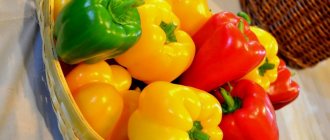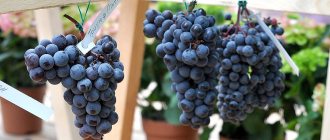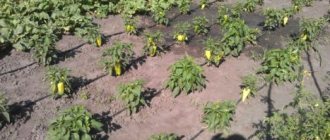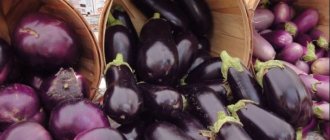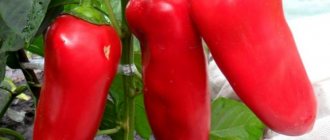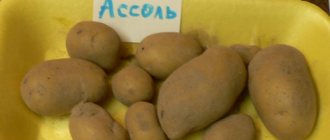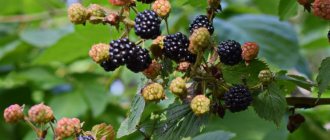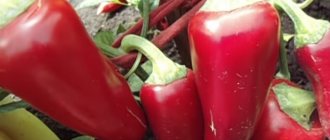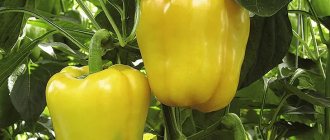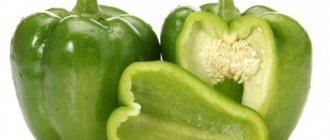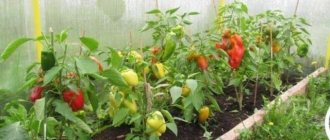The tropics of the American continent are considered the birthplace of pepper. This explains its growing needs. A large amount of heat, moderately dry air, moderately moist soil - these are the conditions that pepper needs to create to get a good harvest. In the climatic zone of the Urals, summer is short and not always hot. But breeders have developed hybrids and varieties of pepper for the Urals, all of them are super-early and early ripening, setting fruit in unfavorable weather. But peppers still have to be grown in the Urals under temporary shelters or in greenhouses.
Criterias of choice
First of all, the best varieties of pepper for the Urals or Siberia should be early or medium. The later ones are not even suitable for a greenhouse. Of course, you can plant them, but you will have to work hard, and you will not be able to fully harvest the crop.
Late peppers, at best, will reach technical ripeness and will not fully reveal their taste. For blanks this may be sufficient. But why should a gardener waste time and energy when there is a wide selection of early varieties that fully produce their harvest even in the short Siberian summer?
If you really want to plant late peppers, you will have to sow the seeds in January and carefully care for the seedlings. By the time the seedlings are planted, they will probably bloom, so they will definitely get sick and produce a small amount of fruit of mediocre quality.
The emphasis should be on early ripening compact varieties. It’s good if the peppers yield their harvest together and quickly. Let fewer fruits grow, but they will be tasty, aromatic, and accumulate enough vitamins. Long-bearing varieties, so prized in the south, simply do not have enough time for this in a harsh climate and even a short summer.
Many gardeners pay close attention to peppers with large fruits and thick flesh. But they need much more time to ripen than small and thin-walled ones.
Residents of the Urals or Siberia will have to come to terms with the fact that it is undesirable to plant large-fruited varieties in open ground. A thick wall is permissible only for small-sized fruits. For greenhouses, the restrictions are not so strict, but it is still better not to buy seeds of giant peppers.
Bulgarian-type varieties grow well in risky farming areas. Although their taste is not as rich as that of cultivars that produce cubic or prism-shaped fruits with a blunt nose and thick flesh, the harvest in Siberia is greater and there is less maintenance.
Final tips
The productivity of pepper often depends not only on proper care and wise choice of variety, but also on the weather characteristics of the current year, especially in the middle zone and northern regions of Russia. This is why sweet pepper varieties for open ground can produce an amazingly high yield one year, and a very low one the next. To guarantee good yield throughout the season, different varieties and hybrids of different ripeness should be planted.
After you, taking into account our recommendations, have chosen and selected the best varieties of sweet peppers, the seeds must be subjected to special treatment before planting. You can learn how to get the maximum number of strong seedlings from the publication Planting pepper seeds for seedlings: basic steps for obtaining healthy seedlings.
Varieties and hybrids for the greenhouse
You can plant in a greenhouse not only the best varieties of pepper for Siberia, but also hybrids intended for cultivation in warm regions. But you will have to take care of them more carefully.
It is recommended to build high, warm beds in film tunnels and old greenhouses. This will expand the choice of varieties and will allow planting crops with long-term fruiting.
Aristotle F1
A hybrid from the Dutch company Monsanto, accepted by the State Register in 2008. In Siberia and beyond the Urals, cultivation in greenhouses is recommended.
The bush is strong, 70 cm. Resistance to bacterial spotting and viruses is high.
The fruit is drooping, with clear ribs and a depressed crown, cylindrical, glossy, 3 or 4 nests. The color at the technical stage is dark green, when fully ripe it is burgundy. The peppers are dense, very tasty, one-dimensional, weighing up to 200 g, the thickness of the pulp is 7 mm. Gives 5.3 kg/sq. m.
Bull
Variety by V.N. Dederko and S.V. Ugarova, mid-season, year of inclusion in the State Register - 2012. In Western Siberia and the Southern Urals it can grow in open ground; for colder climates, planting in hotbeds and greenhouses is recommended.
The plant is 60 cm high. The peppers are pointed nose down, cubic in shape, ribbed, white with green in the technical stage, yellow in the biological stage. Weight 85-120 g, wall – 4-5 mm, good taste. From sq. m gives up to 5.5 kg.
Bison red F1
A new mid-season hybrid from, accepted by the State Register in 2021. In the Urals and Siberia, red Bison pepper is intended for greenhouse use.
The bush is strong, semi-spreading, 90 cm high. The leaves are large, dark, with a slightly wrinkled surface. The downward-pointing fruits are long (some reach 25 cm), in the shape of an elongated cone with a blunt crown, an uneven glossy surface, and moderately pronounced ribs. Color depends on the degree of ripeness:
- technical – green;
- consumer - dark red.
Weight 150-190 g, wall – up to 6 mm. Fruiting is extended, yield per square meter. m – 7.5 kg.
Mammoth tusks F1
An early ripening hybrid, it is not listed in the State Register. Bush 100 cm high. Resistant to viral diseases. In the Urals, as in Siberia, it is recommended to plant in a greenhouse.
One plant can produce 12 large commercial peppers of the original shape. They are long, some reach 27 cm, narrow, usually with a curved tip, which really gives the appearance of a tusk, as can be seen in the photo.
Mammoth Tusk pepper is green at first, yellow strokes appear at technical maturity, and after full ripeness the color becomes bright red. The weight of one specimen reaches 200 g, the pericarp is up to 7 mm, the yield is 5 kg/sq. m.
Big mom
A popular early agro variety, accepted by the State Register in 2011. Even beyond the Urals and in some areas of Siberia it can be grown in the garden, but preference should be given to planting under cover.
Forms a bush:
- outdoors – 50 cm;
- grown in a greenhouse – 1 m.
Big Mama peppers are cylindrical, drooping, shiny, dark green at first, orange when ripe, weighing from 120 g, with 3-4 chambers and a wall of 7 mm. According to reviews, the taste is one of the best among orange and yellow fruits. Pepper is productive, not inferior to hybrids, yields up to 8 kg/sq. m.
Winnie the Pooh
An old early ripening variety of the Transnistrian Research Institute of Agriculture, recommended for cultivation in the climate of the Urals and Siberia. Listed in the State Register since 1981.
Winnie the Pooh pepper was created specifically for planting in heated greenhouses and obtaining marketable products in winter and spring. But it can be grown on a windowsill at any time of the year, or in the summer - in unprotected soil or under cover.
The bush is not just short, it is dwarf, standard, 25-30 cm, with large beautiful leaves. The fruits are cone-shaped with a sharp crown, similar to classic bell peppers, smooth, slightly ribbed, weighing 50-70 g, with 2-3 chambers and a thin wall. Once fully ripe it turns red. The growth period is limited, like all bouquet varieties, and yields a harvest. From sq. m harvest about 1.8 kg.
Yellow bell
An agricultural variety accepted by the State Register in 2008. There it is listed as late, but often goes on sale as mid-season. Residents of Siberia and the Urals need to pay attention to this, and place them exclusively in permanent greenhouses.
The bush is medium-sized. Forms prism-shaped yellow vegetables with a glossy sheen, weighing 120-170 g, and a wall thickness of up to 5.2 mm. Yellow bell pepper sets well even with significant temperature fluctuations. Productivity – up to 8 kg per square meter. m.
Kubyshka
An agro-breeding variety, accepted by the State Register in 2008. One of the largest-fruited early varieties that produces crops in Siberia and the Urals.
The bush is tall, up to 1.2 m, spreading. Capsicum peppers are lowered to the ground, cylindrical, shiny, ribbed, with 3-4 chambers, dark green in technical ripeness, cherry - in biological ripeness. Average weight – 250 g, yield – up to 6 kg per square meter.
Orange beauty F1
A popular hybrid grown in greenhouses in Siberia and the Urals. Mid-season pepper, in the State Register since 2012, created by Semko-Junior LLC.
The fruits are drooping, light green at technical maturity, orange at consumer ripeness, 70% are cylindrical, 30% are prism-cuboid. Peppers with a pulp thickness of 6-9 mm, 4 chambers, weighing about 190 g, yield of 8-9 kg/m2. The variety is resistant to verticillium.
Snowball F1
One of the most productive hybrids grown in greenhouses in the Urals and Siberia. Created, year of inclusion in the State Register – 2002.
The bush is dense, compact, does not require formation, up to 70 cm high. Pepper has shown resistance to mosaic and low temperatures.
It reaches technical ripeness among the first - in 95-106 days, and turns white with a greenish tint. Biological maturity occurs approximately 10 days later, and the color becomes scarlet. The fruits are prismatic, drooping, with a wall of about 4.5 mm, weighing up to 90 g. Productivity - 11.6 kg per square meter. m.
Stanley F1
A mid-early hybrid from the Dutch company Bejo, accepted by the State Register in 2007. In Russia it showed characteristics that differed from those declared by the originator. In Siberia and the Urals it is grown in protected soil.
Stanley pepper is tall, 110-130 cm, a bush with wrinkled leaves of medium size. Vegetables are conical, cube-shaped, with 3-4 nests, glossy, green in the technical stage, red when fully ripe. According to the breeder, the fruits reach 250 g, in Russian conditions - from 75 to 130 g. The wall is 0.8-1 cm, the yield is more than 2.3 kg.
Eskimo F1
Dutch mid-early hybrid from the Wing Seed company, in the State Register since 2011. In the Urals and Siberia, it is recommended for protected soil.
In greenhouses, the bush reaches a height of 90 cm. The peppers are drooping, cubic or prism-shaped, shiny, slightly ribbed, with a blunt end, red to burgundy shades when fully ripe, dark green at the technical stage. The fruits are of different sizes, from 150 to 400 g, with a wall of 7-8 mm. The variety produces about 4.8 kg/sq. m.
Early Sunshine F1
Hybrid Early sensation from the Dutch company Monsanto, medium ripening period, in the State Register since 2008. In Siberia and the Urals, it is recommended exclusively for closed ground.
The plant is spreading, up to 55 cm high, with wrinkled, medium-sized leaves. The peppers are drooping, cube-shaped, shiny, yellow when fully ripe, green at the technical stage, weighing 140-160 g, with a wall of 6 mm. Productivity per sq. m – 4.8 kg.
Bogatyr
Pepper of this mid-season variety grows well in the difficult weather conditions of the Urals: it is undemanding to light and can withstand low temperatures. Bogatyr is famous not only for his unpretentiousness. Its sweet and juicy red fruits are shaped like a cone and can reach a length of 18 cm. Plus, they have an excellent presentation and are not damaged during transportation, so they can be grown for sale.
| Purpose | Growing | Ripening time (days) | Fruit weight (g) | Productivity (kg/sq.m) |
| 115-131 | 75-100 | 2,2-4 | ||
Cultivars for open ground
Pepper varieties for open ground in Siberia and the Urals are chosen especially carefully. They should be short, early ripening, with not too large fruits in order to have time to ripen completely.
Hybrids are not recommended for growing in gardens in cold regions. Although they are usually more tasty and productive than varieties, they require careful care and conditions close to ideal. In harsh climates, this is difficult to achieve even in a greenhouse, but for open ground it is impossible.
When growing sweet peppers in Siberia, gardeners should always have covering material on hand. As soon as the weather turns bad, the heat in the beds must be preserved by protecting them with non-woven fabric or film.
Venti
A productive early variety of bell pepper. Both in Siberia and the Urals it can be grown not only under cover, but also in gardens. Forms a neat bush up to 55 cm in size.
Vegetables weighing about 70 g are elongated cone-shaped, directed downward, with a sharp tip, pericarp 5.5 mm. When fully ripe they are bright red. The variety is resistant to a number of diseases and produces a yield of 3.5-5 kg per square meter. m.
Goliath
A relatively new early variety for Siberia and the Urals, bred by V. N. Dederko, accepted by the State Register in 2015. Grown in open ground, greenhouses, greenhouses.
Bush 70 cm high, semi-spreading, with wrinkled dark leaves. The fruits are glossy, green at the technical stage, red after ripening, average weight – 122 g, wall up to 1 cm, nests 3 or 4. Productivity for open ground – 4.6 kg/sq.m. m.
Seed producers claim that the Goliath variety produces fruits up to 400 g.
Hussar Cup
This interesting mid-early variety is not yet listed in the State Register. Since the fruits ripen together, and 100-105 days pass from the moment of sprouting to the first red strokes, it can be grown in the gardens of the Urals and Siberia.
Standard bush, up to 60 cm, bouquet fruiting. The peppers are beautiful, dark red, hanging on gracefully curved stalks, truly reminiscent of a medieval goblet. Weight reaches 150 g with a wall of 0.8-1 cm.
Kolobok
An old early Transnistrian variety authored by Yu.I. Pancheva. In the State Register since 1983. Recommended for the North Caucasus, but successfully grown in the Urals and Siberia, often on window sills in winter, and in open ground in summer. There is no point in wasting space in the greenhouse for such a miniature variety.
Bush up to 30 cm, compact. Resistant to mosaic and topping, rarely suffers from anthracnose, often from fusarium.
Among the vegetables included in the register is Kolobok pepper with red fruits, and yellow seeds can be found on sale. With such a slight increase, it gives per square meter. m 2.3-4.8 kg.
The fruits are round, dark red, ribbed, and resemble Ratunda in shape. Peppers for a mass of 100-167 g are quite thick-walled - 6.3-10 mm.
Merchant
An early-ripening variety from the Federal Scientific Center for Vegetable Growing and Agro, included by the State Register in 2001. It is grown in open ground in Western Siberia and the Southern Urals; in colder climates, planting under film is recommended.
Bush up to 85 cm, with slightly wrinkled green leaves. Kupets peppers are drooping, of uneven size:
- average weight 60-90 g with a wall of 4-5 mm;
- maximum weight – 130 g, pulp up to 8 mm thick.
The fruits are similar to bell peppers. The variety is characterized by high marketability, but low yield - 1.3-2.2 kg/sq. m.
Medal
An old variety, early, from the Federal Scientific Center for Vegetable Growing, included in the State Register in 1992. Pepper Medal was bred specifically for I, the northernmost light zone.
Bush 1.2 m high, compact. The peppers are tasty, but small, weighing up to 50 g, with a thin wall of 3-4 mm. The shape of the vegetables is similar to the Bulgarian group, but with a blunt tip, red when fully ripe, and light green at the technical stage. Productivity up to 4.5 kg/sq. m.
rosy cheeks
An interesting super-early variety from Dederko V.N., in the State Register since 2012. Ideal for planting in gardens in Siberia or the Urals. Can be grown under film. Even in greenhouses it is cost-effective - with low, about 50 cm, bushes, the yield per square meter. m is 4.6-5.4 kg.
The peppers are tasty, have a shape from short-cone to heart-shaped, with their noses pointing upward. When set they are greenish-white, and when fully ripe they are dark red. Weight – 40-50 cm with a wall of 5-7 mm.
Taiga
An early variety popular in Siberia and the Urals. It is not listed in the State Register; it grows well in open beds and under film.
The bush is small, about 30 cm, with sparse leaves. Peppers weighing about 60 g are juicy, tender, with Bulgarian-type fruits, shelf-stable and tasty.
Fat Baron
An early variety by Postnikova T.N., in the State Register since 2007. Can be grown in open ground in Siberia and the Urals.
The bush is dense, dense, up to 55 cm high. The vegetables are glossy, prism-shaped, at first dark green, after ripening - burgundy. Nests 3 or 4, weight from 106 to 167 g, wall - 0.7-1 cm. Productivity - 2.6 kg.
Nowadays the choice of sweet pepper varieties for cold regions is huge. Having carefully studied the description, every gardener will be able to find exactly what he needs in terms of color or shape of the fruit. There are still some size restrictions, but they are gradually becoming a thing of the past.
Author of the article: Zhuravel Tatyana Nikolaevna
Growing seedlings
In the Urals, peppers are grown in seedlings, regardless of where the plants will then be planted, in a greenhouse or in open beds. Seedlings are planted at the age of 60 days. It takes another 2 weeks for the seeds to germinate. The sowing time is calculated taking into account the time of transplanting the seedlings to a permanent place. Warming up of the soil to +18 degrees is considered a suitable condition for replanting. The night air temperature at this time should be at least +15 degrees. Such conditions are created in the Urals at the end of May.
Important!
Seeds for growing seedlings are sown in early March. If you plan to plant in a greenhouse, seeds for seedlings are sown at the end of February.
Seed preparation
Pepper seeds take a long time to germinate. Therefore, pre-sowing treatment is mandatory for them. First, the seed material is checked for germination. To do this, prepare a salty solution from 1 liter of water and 1 tbsp. l table salt. The seeds are dipped into the liquid and mixed thoroughly to eliminate air bubbles. After some time, most of the seeds sink to the bottom, and some remain floating on the surface. They are empty and will not sprout, so they are thrown away.
The remaining high-quality seeds are soaked in a weak solution of potassium permanganate for disinfection for 30 minutes. Then for another 20 minutes place in a mixture of 1 liter of warm water and 1 tbsp. l. wood ash to speed up germination. Instead of an ash solution, you can use any growth stimulator.
If store-bought seeds are used for sowing, they do not need pre-sowing treatment. Typically, industrially produced seed material is prepared in advance for sowing, disinfected and treated with stimulants. Such seeds are simply heated for several days by placing them in a warm place with a temperature of +25 degrees.
Soil preparation and sowing
To grow and care for seedlings, many vegetable growers use ready-made soil mixture for vegetable crops, purchased at a gardening store. If this is not possible, the soil is mixed independently from the following components:
- 2 parts humus;
- 1 part garden soil;
- 1 part sand.
For every 10 liters of prepared soil mixture, add 1 cup of wood ash. Pepper seedlings do not like transplants. Therefore, for more active growth, seeds are sown in individual peat or plastic cups. Several holes are made at the bottom of the containers to drain excess liquid and filled with prepared soil.
Place 2 seeds in each cup, deepening them by 1.5 cm. After germination, weak specimens are removed, leaving the strongest to grow. After planting the seeds, moisten the soil surface with warm water from a spray bottle and cover with film. The containers are left in a warm place with a temperature of +25 degrees. When shoots appear, the shelter is removed.
Seedling care
To obtain healthy and strong seedlings, pepper seedlings must be properly cared for and created favorable conditions for growth. Therefore, during the day the seedlings are kept at a temperature of +25 degrees. In the dark, they are transferred to a cooler room, where the air warms up to +15 degrees. This will help the seedlings quickly adapt after transplanting to a permanent location.
Important!
Plants are protected from drafts, but are regularly ventilated so as not to create conditions for the development of fungal diseases.
The soil in seedling containers must be constantly moist. Therefore, the seedlings are watered regularly. Irrigation is carried out as needed in the morning or evening. For irrigation, use settled water heated to a temperature of +25 degrees. The soil is moistened carefully by watering from a pipette or spraying with a spray bottle. Additionally, to reduce dryness, spray the air around the seedlings.
Leaves on seedlings appear 7-10 days after germination. After the formation of the third leaf, the first fertilizing with nitrogen is carried out to stimulate growth. To do this, use a solution of 10 liters of warm water and 1 tbsp. l. urea. Additionally, a little wood ash is scattered over the surface of the soil. The second feeding is carried out before transplanting to a permanent place. Use the same solution as a top dressing, adding 1 tbsp. l. superphosphate. Adherents of organic farming feed the seedlings with nettle infusion.
Before transplanting to a permanent location, the seedlings are hardened off. 2 weeks before the scheduled date, first open the window for several hours in the room where the seedling boxes are located. A few days later, during the day, the seedlings are taken out onto the balcony, shaded from the sun. If the air temperature does not drop below +15 degrees, the seedlings are left there overnight.
Winnie the Pooh
The bush of this early ripening variety is very compact: it grows only 30 cm in height, and the weight of the fruit does not exceed 50 g. But this fact does not in any way affect the taste of the pepper - they are excellent. Winnie the Pooh fruits are bright red and cone-shaped.
| Purpose | Growing | Ripening time (days) | Fruit weight (g) | Productivity (kg/sq.m) |
| 107-110 | 48-50 | 1,6-1,8 | ||
Montero
The tall bush (about 120 cm) of the Montero variety bears large scarlet fruits, the weight of which, when grown in a greenhouse or under film, can reach 250 g. And this is not the limit!
In 2002, a record weight of Montero sweet pepper fruit was recorded. It amounted to 940 g.
| Purpose | Growing | Ripening time (days) | Fruit weight (g) | Productivity (kg/sq.m) |
| 90-100 | 240-260 | 7-14 | ||
Choosing sweet peppers for the Urals
The tropics of the American continent are considered the birthplace of pepper. This explains its growing needs. A large amount of heat, moderately dry air, moderately moist soil - these are the conditions that pepper needs to create to get a good harvest. In the climatic zone of the Urals, summer is short and not always hot. But breeders have developed hybrids and varieties of pepper for the Urals, all of them are super-early and early ripening, setting fruit in unfavorable weather. But peppers still have to be grown in the Urals under temporary shelters or in greenhouses.
So what kind of sweet pepper is recommended to plant in the Urals?
Pepper Orange Miracle - early ripening
90 days will pass from the emergence of seedlings and the first harvest can be harvested from the bushes. Large orange “cubes” look amazing on almost meter-long lush green bushes. During the season, up to 15 kg of vegetables ripen on one square meter of plantings. The weight of one pepper can reach 250g, with a wall thickness of up to 10mm! Another advantage of this Orange Miracle variety is its resistance to the tobacco mosaic virus.
Pepper Maradona F1 is a super early hybrid.
The same huge peppers ripen on a very powerful bush. The weight of each cube-shaped fruit can reach 230g, the size is 9*9 cm, and the walls are 6-9mm thick. Another highlight of this variety is its attractive color, which changes depending on the ripeness of the pepper. A slightly grown ovary is ivory in color, gradually becoming yellow-orange.
When planting Maradona peppers, you need to take into account his individual wishes. The hybrid is well suited for both open ground and various greenhouses. Be sure to tie the bush to a support. And if you grow bushes of this pepper without picking, the harvest will ripen even earlier. The attractive qualities of sweet peppers of this variety are that each bush bears a lot of fruits, produces a high yield, and is immune to disease.
Yellow bull, Red bull
These mid-early varieties differ only in the color of the fruit. As you might guess, the first variety has yellow fruits, the second – red. They are very large, shaped like a prism with a ribbed surface.
The bushes on which the pepper ripens are quite tall and strong. The main value of both varieties is their very high yield and good presentation of the fruit.
| Purpose | Growing | Ripening time (days) | Fruit weight (g) | Productivity (kg/sq.m) |
| 95-108 | 167-200 | 14-20,5 | ||
Pioneer
According to amateur gardeners cultivating sweet peppers in the Urals, Pioneer is the only variety ideal for growing in open ground in the harsh conditions of this region.
The pepper bush grows up to 70 cm and bears medium-sized cone-shaped fruits, which become deep red in color as they ripen. The only drawback of this variety is its low yield. But to grow it you do not need to build any special devices.
| Purpose | Growing | Ripening time (days) | Fruit weight (g) | Productivity (kg/sq.m) |
| 116-135 | 55 | 0,8 | ||
